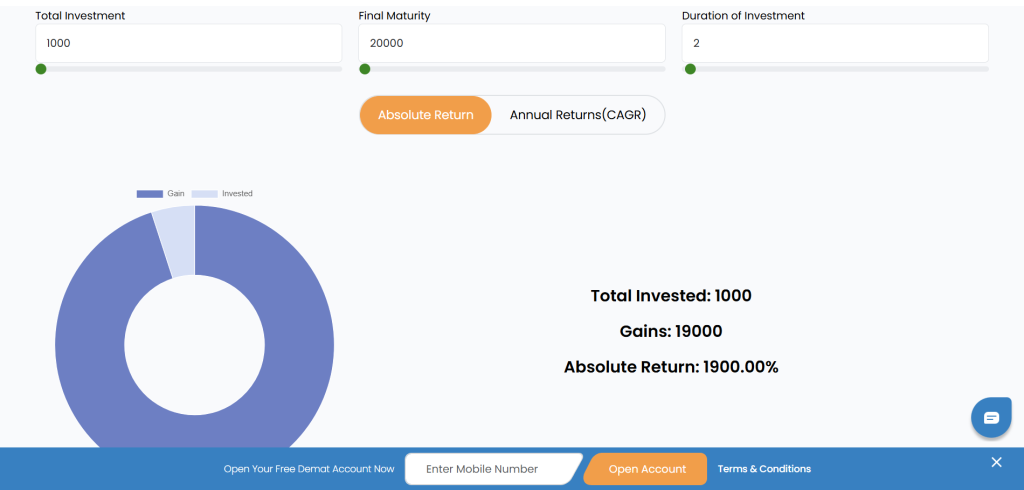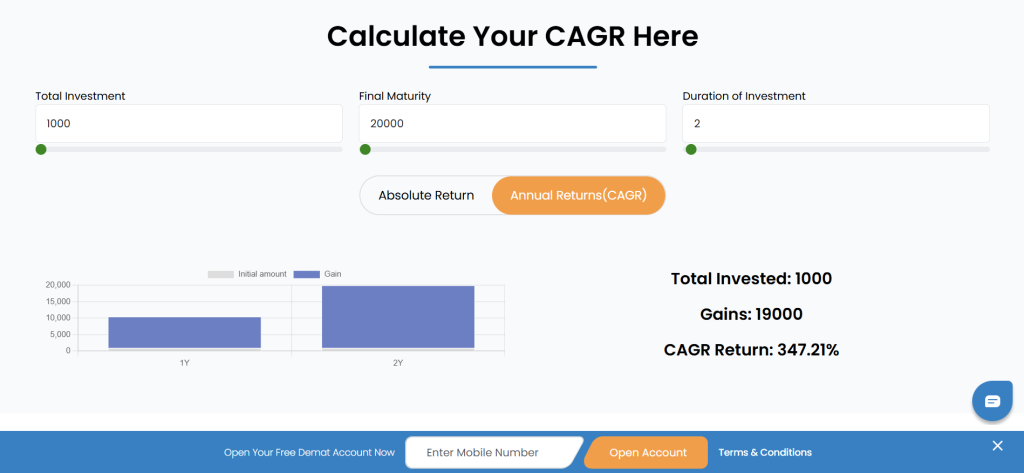Yes, you can adapt the CAGR concept to calculate growth over periods shorter than a year, such as months.
You can calculate your CAGR easily using Share India’s CAGR Calculator here:


However, it’s important to understand how to adjust the calculations. Here’s a breakdown:
Understanding the Adjustment:
1. Core Concept:
- CAGR aims to provide an annualised growth rate. When dealing with monthly data, you’re essentially finding a monthly growth rate and then annualising it.
2. Adjusting the Formula:
- The key is to adjust the “n” (number of periods) in the CAGR formula to reflect the monthly periods.
- If you have monthly data, you’ll need to account for the fact that there are 12 months in a year.
3. Example:
- If you want to find the equivalent annual growth rate of an investment that has grown over a few months, you would adjust the time period in the exponent of the CAGR formula to reflect the fraction of the year that those months represent.
- Essentially you would need to change the time period to reflect the fraction of a year that the time period represents.
Key Considerations:
1. Annualisation:
- When you calculate a “monthly CAGR,” you’re really finding a growth rate that, if compounded monthly, would result in a certain annual return.
2. Volatility:
- Monthly growth rates can be very volatile, so a “monthly CAGR” can fluctuate significantly. It’s important to interpret these figures with caution.
3. Consistency:
- Ensure that your data is consistent. If you’re calculating a monthly CAGR, make sure all your data points are monthly values.
In essence, while the term “CAGR” implies annual growth, the underlying principle of compound growth can be applied to shorter timeframes. Just remember to adjust your calculations accordingly to annualise the results.
If you have any questions or need further support, don’t hesitate to contact Share India’s support team. You can reach us at 18002030303 or email us at support@shareindia.com.